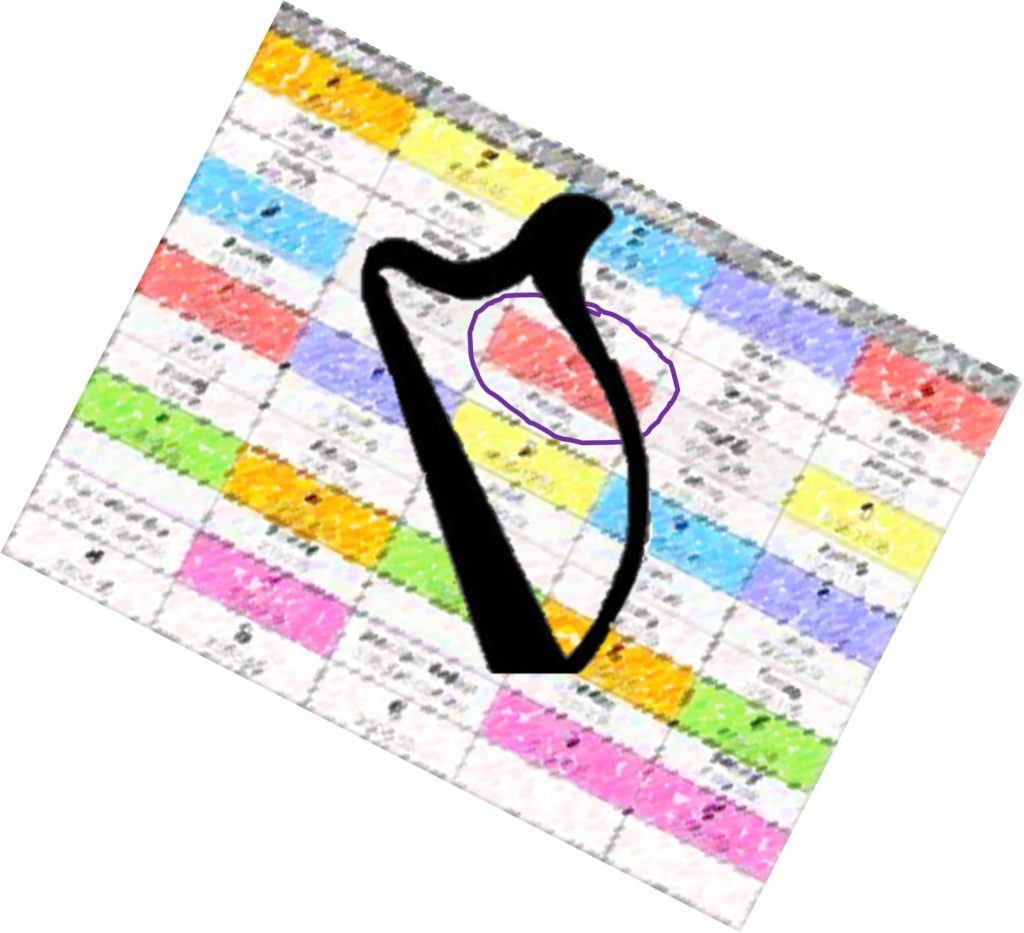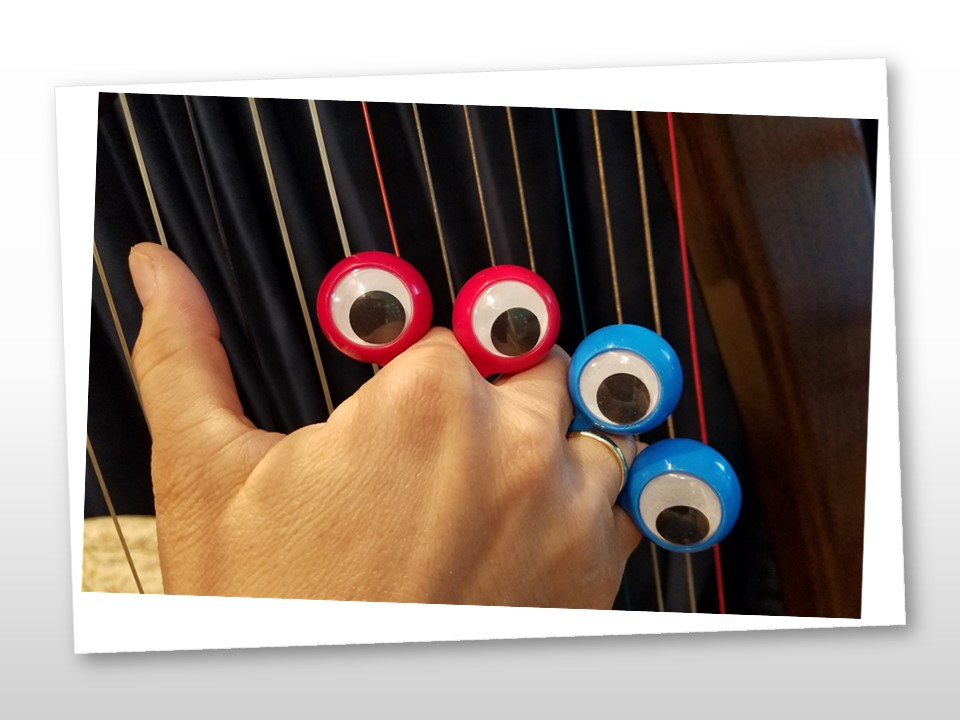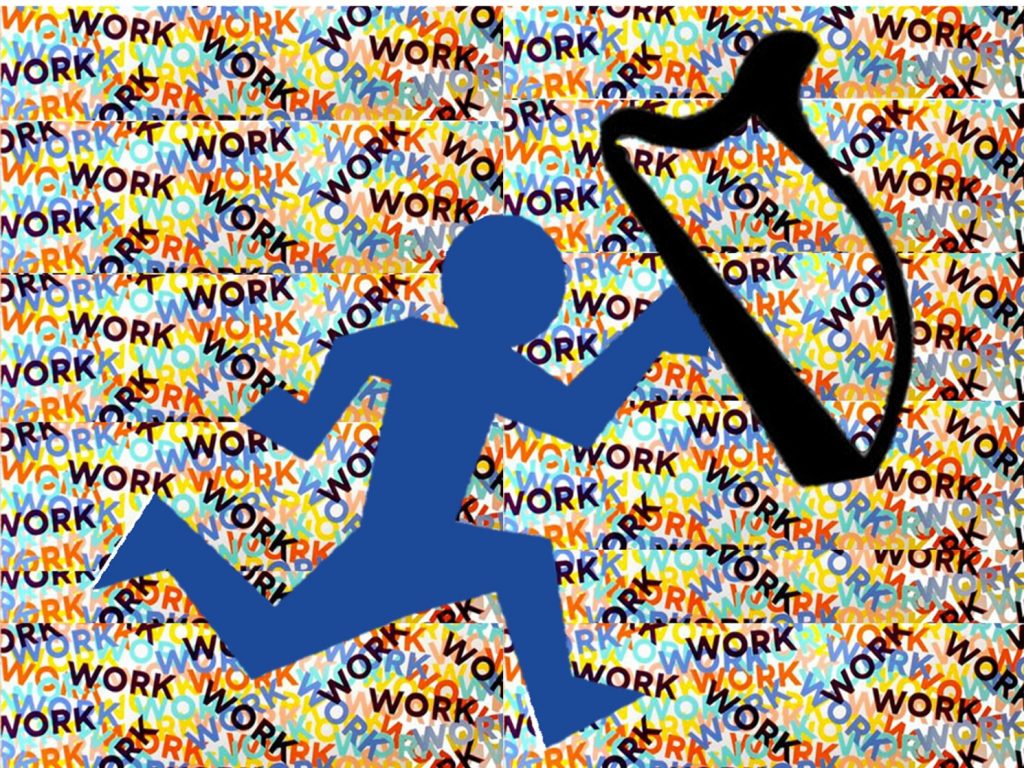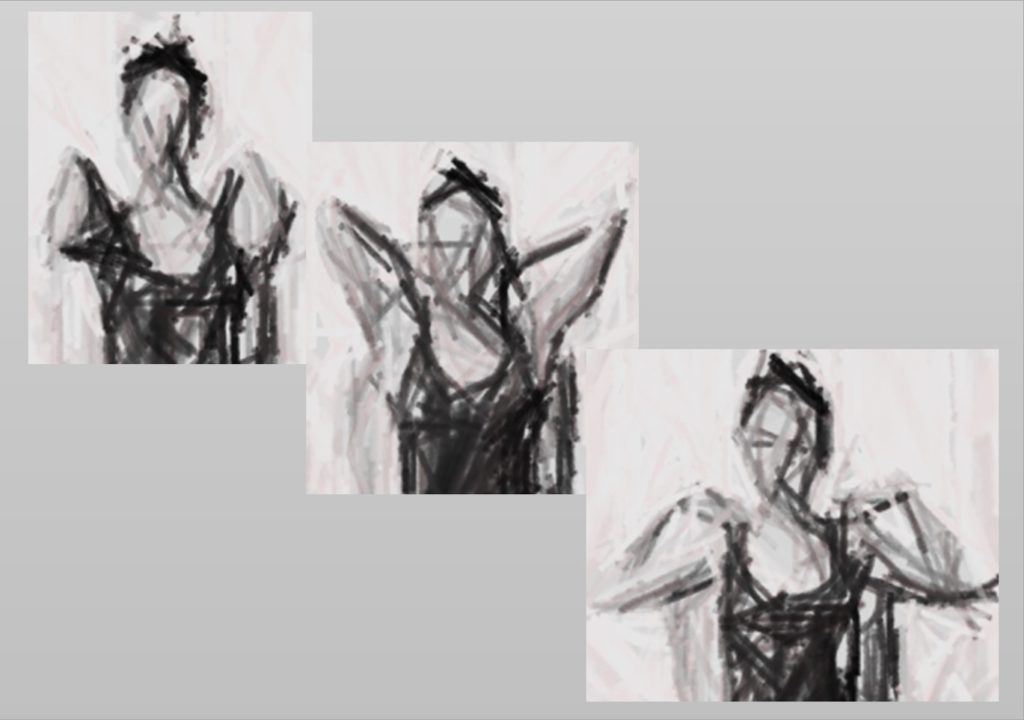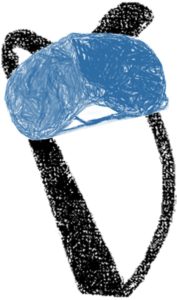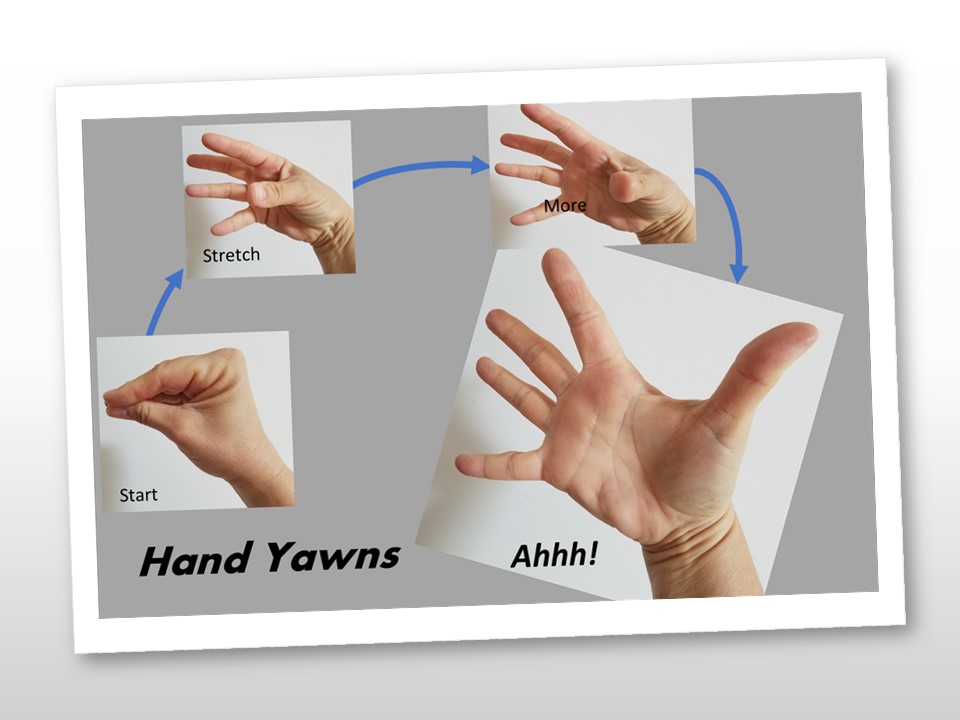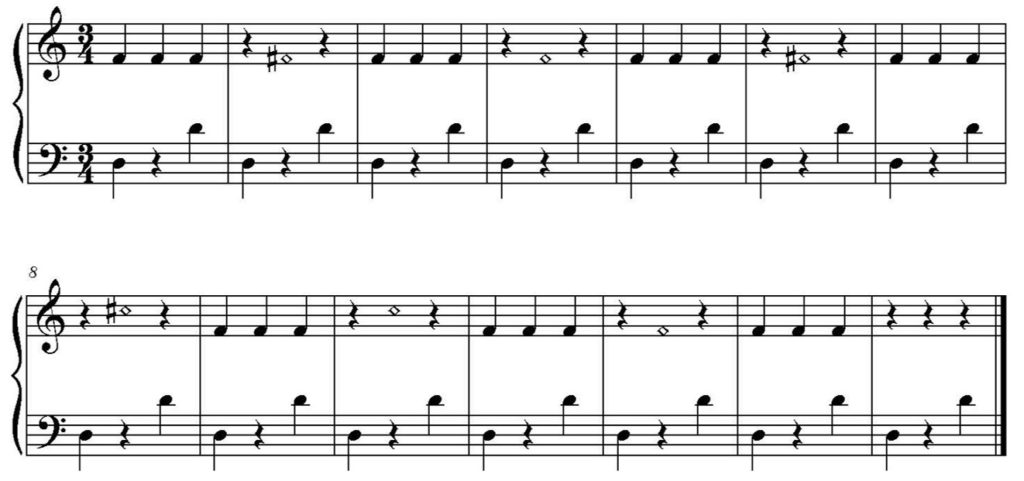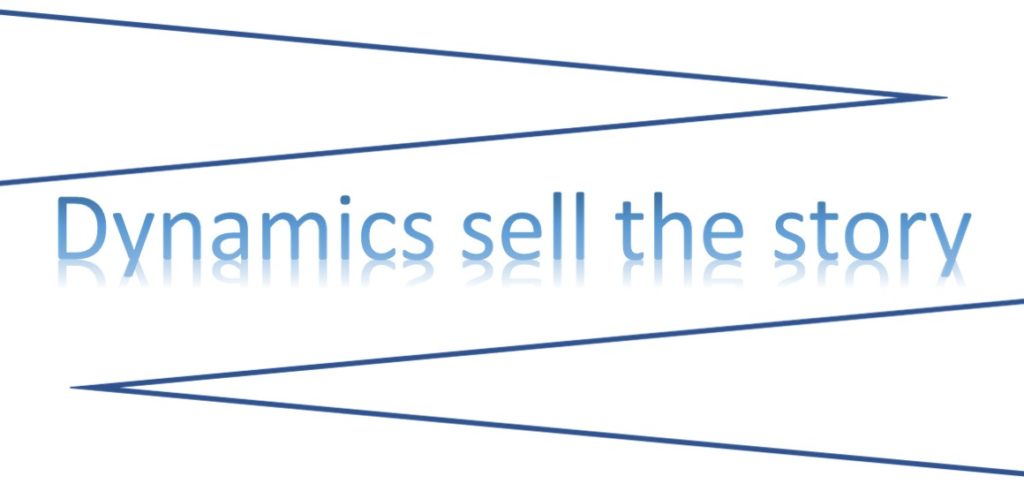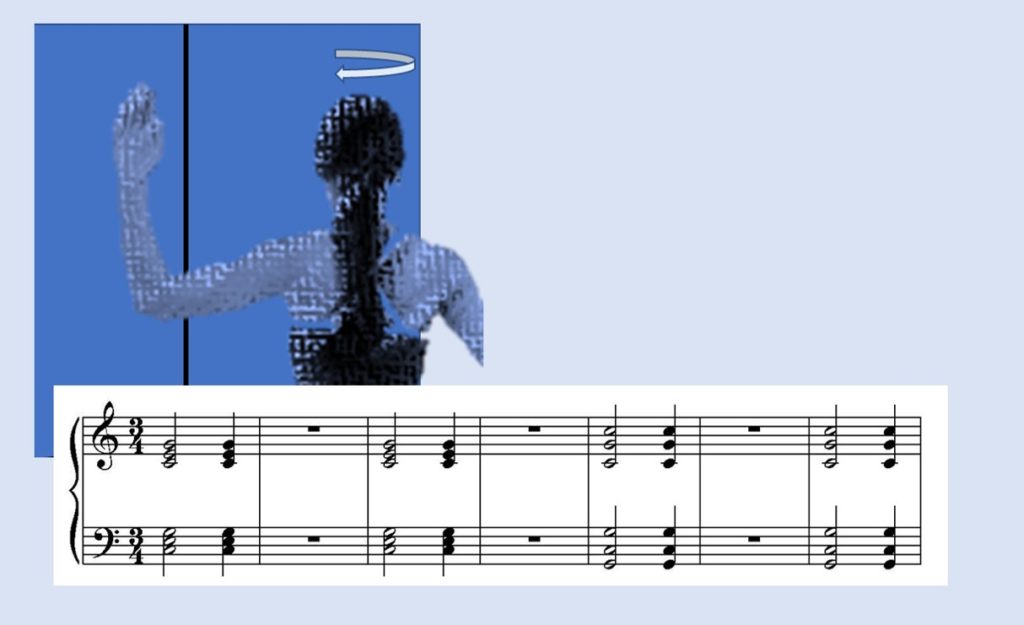Habits are supposed to serve us. They are behaviors we perform without thinking.
Habits can be good – like brushing your teeth, putting on your seat belt, or going to bed on time.
Or habits can be bad – like eating ice cream every day, biting your nails, checking your phone during dinner.
Habits are like callouses – forming slowly over time. They form when we’re busy paying attention to other things. And so, insidiously, they creep into your processing, your playing, and you never notice.
And while you are not noticing, the bad habits grow stronger. Until one day – you see a photo, a reflection, or a friend laughingly points out that you look like a troll with a harp! Or worse, you develop pain in your neck, shoulder, hip, hand, arm that you d-e-f-i-n-i-t-e-l-y notice after you’ve been playing. Or sometimes you notice it when you’re away from the harp – and you wonder what you’ve done.
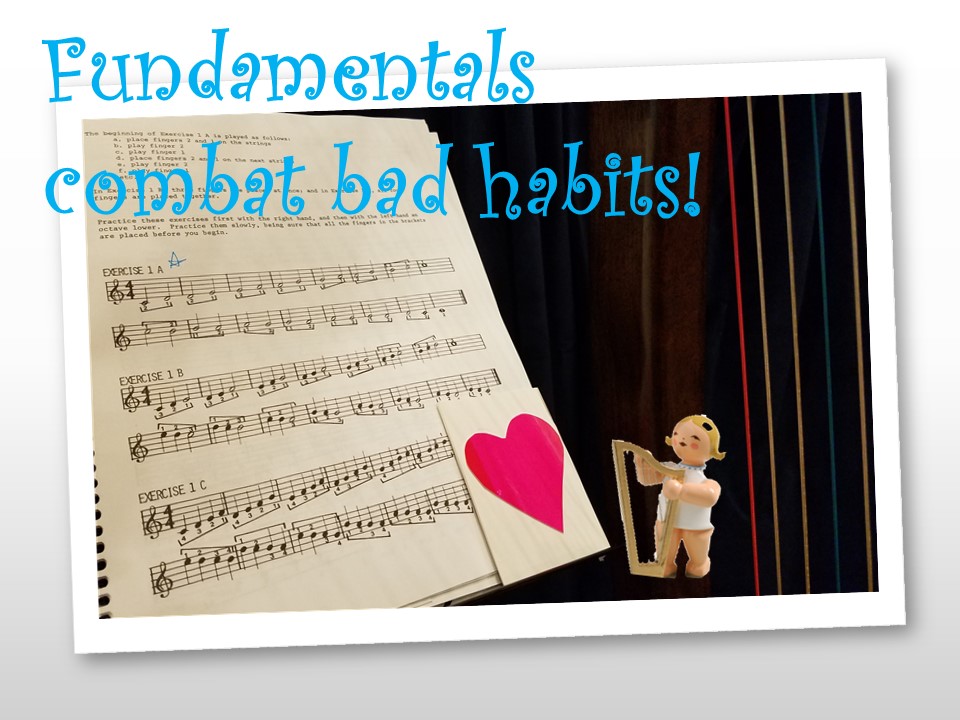 Bad habits can be general – you’re slouching on the bench or your head is thrust forward as you look at the strings. Or they may be quite specific – your hands are not closing on your elbow is dragging your forearm along the edge of the soundboard, your feet are not flat on the floor. But all bad habits are called “bad” for a reason – these habits are not serving you or your harp playing!
Bad habits can be general – you’re slouching on the bench or your head is thrust forward as you look at the strings. Or they may be quite specific – your hands are not closing on your elbow is dragging your forearm along the edge of the soundboard, your feet are not flat on the floor. But all bad habits are called “bad” for a reason – these habits are not serving you or your harp playing!
What? You’re not screaming in pain? No one has laughed at your bad posture? Maybe you don’t have any bad habits…or maybe you just haven’t noticed! Insidious, remember?
How would you know? Here are four surefire ways to find your bad habits –
- Check it out. Hang a full-length mirror where you can check your look while you’re practicing. This is not a decorating tip (although you can also use it to help light your space better too!). Whether you hang the mirror or get a cheval glass on a stand – put it where you can look up and see what you look like while playing. This requires no help or technology.
- Have a photo shoot. Enlist a friend or family member to photograph you “in the act” when you don’t expect it. This is the same idea but might be a little less discombobulating – having the photos will also tell you things you might rather know before you sit to your next practice session.
- Star in your own show. Videotape yourself – this is relatively easy now – just prop your phone on your music stand and prepare to learn all sorts of things (that you might rather not know – but will help you!). The second step is the most important – watch the video! See what you’re doing when you aren’t watching.
- Play freeze tag. Remember freeze tag? When you begin to practice, set a timer for some random number of minutes. When it dings – freeze! Then very carefully check yourself out – look at your hands, arms, legs, head and back – are you where you want to be? How’s your posture? Make corrections, reset the timer, and go back practicing. If you are sitting for a long practice session, plan to do those a number of times including toward the end of your practice when fatigue will contribute to bad habits – you might even have some that don’t come up until later when your fatigue enhances them.
Any of these ways will help. A combination of them will give you a fuller picture of what you need to fix.
How do you fix your bad habits? Go back to the fundamentals! They are called fundamentals for a reason!
When you started playing, you learned these fundamentals – go back to them. Pull out your beginning book – whether it’s Sylvia Woods, Deb Friou, Bonnie Mohr, Maria Grossi, or any of the other beginning books – and head to the beginning, working slowly and carefully on the exercises that first helped you to learn those fundamentals.
Of course, there’s a whole other set of musicality bad habits but we can deal with those another time. Work on the fundamentals of playing first.
What are your worst habits? Let me know and we can compare notes!
